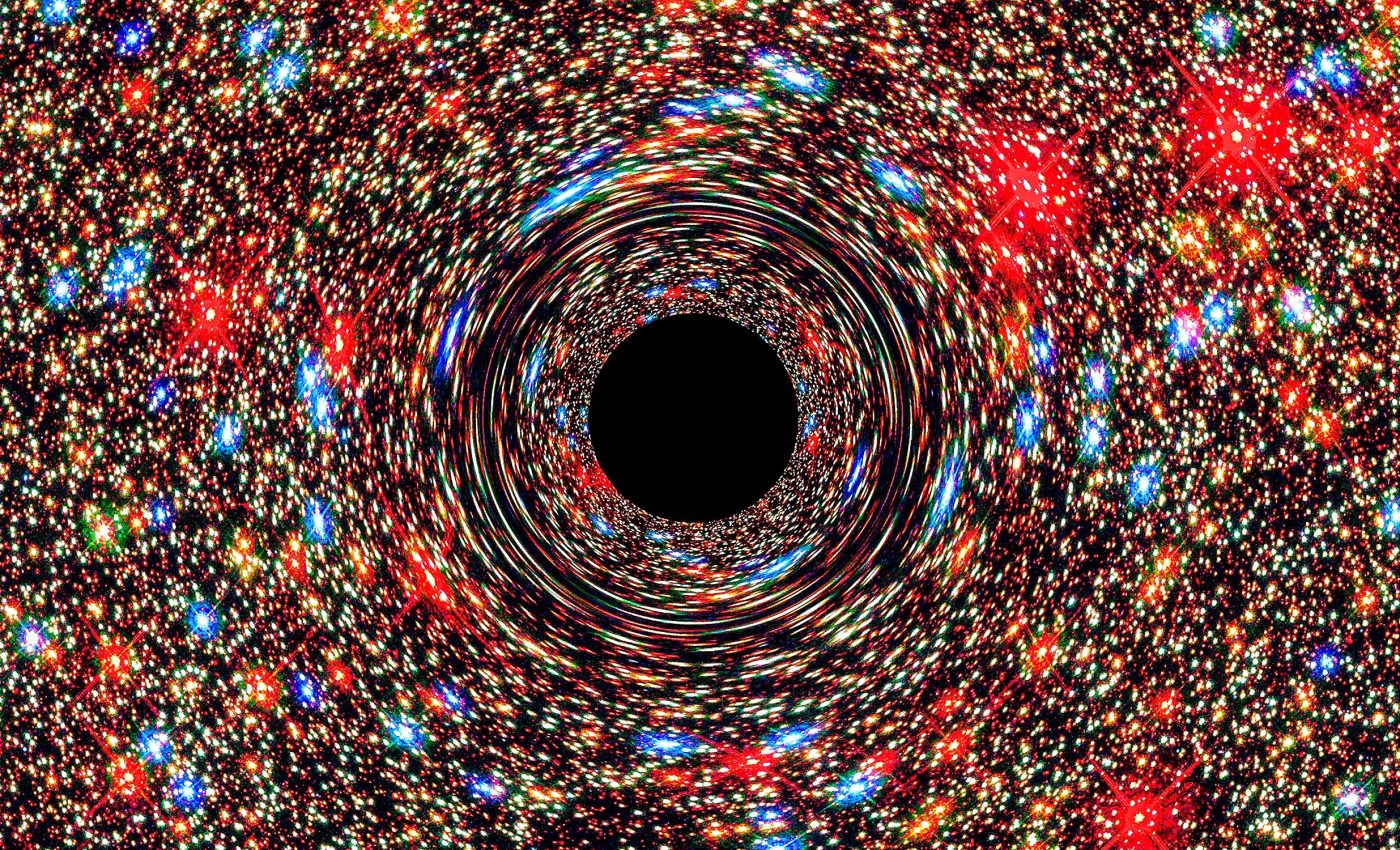
Supermazes: Understanding the structure of black holes on a microscopic level
A group of physicists has proposed a new way of thinking about black holes by mapping out intricate “supermazes” – theoretical structures that provide a fresh blueprint for understanding the microscopic complexity of these enigmatic objects.
Their research, published in the Journal of High Energy Physics, expands upon the idea of black holes derived from general relativity, offering a nuanced perspective rooted in string theory and M-theory.
Beyond the limits of general relativity
Black holes have been traditionally described through the lens of general relativity, which focuses on large-scale gravitational effects and predicts an event horizon around a featureless mass so dense that not even light can escape.
But this picture leads to tensions with quantum mechanics, which requires that black holes exhibit vast amounts of microstructure to account for the information they contain.
“General relativity is a powerful theory for describing the large-scale structure of black holes, but it is a very, very blunt instrument for describing black-hole microstructure,” said Nicholas Warner, co-author of the study and professor of physics, astronomy, and mathematics at the USC Dornsife College of Letters, Arts and Sciences.
“In a framework of theories extending beyond Einstein’s equations, supermazes provide a detailed portrait of the microscopic structure of brane black holes.”
By refining earlier ideas, the researchers use supermazes to extend the notion of “fuzzballs,” which arise in string theory as detailed replacements for classical black holes.
Where a classical black hole in general relativity appears as a smooth horizon, the “fuzzball” approach – now supported by this new supermaze formalism – depicts black holes as highly complex, intricate objects composed of branes and geometry at very small scales.
Building black holes with branes
String theory has long posited that fundamental particles can be described as vibrating strings in higher-dimensional space, but M-theory goes one step further by suggesting these objects can also exist as “branes,” short for membranes with multiple spatial dimensions.
This approach reveals that black holes are not simply mass crushing down to a point but can be modeled as extended, interlocking brane structures.
“In this paper, we explore intersecting systems of M2-branes (two-dimensional) and M5-branes (five-dimensional) within the realm of supergravity, which is a low-energy approximation of M-theory,” Warner explained.
“We think of the maze as the ‘substrate’ upon which all the information about whatever made the black hole, or ever fell into it, can be encoded.”
These maze functions act as dynamic templates dictating how branes intersect and interact, effectively recreating black hole properties while still containing copious internal detail.
The ultimate effect is to reconcile the vast entropy required by quantum gravity with the geometry expected from general relativity.
Supermazes in action
The authors’ new concept of a “supermaze” rests upon a key mathematical construct they call the “maze function.”
This function obeys a nonlinear differential equation akin to the Monge-Ampère equation – a well-known and notoriously challenging equation that arises in problems of differential geometry and physics.
Its solutions govern how M2- and M5-branes can interweave to form a black hole-like configuration with all the microstructure demanded by quantum principles.
“Maze functions play a pivotal role in linking the brane configurations to supergravity solutions, which in turn provide a new way to explore black-hole microstates,” Warner said.
“The maze function is the billion-pixel camera that can give us a deep and detailed picture of the microstructure of black holes.”
The difference between a classical black hole horizon and these newly devised supermazes is one of resolution. Where general relativity might produce a blank silhouette – similar to a one-pixel image – supermazes supply a high-definition rendering that captures the underlying quantum states.
“Suppose you wanted a picture of Michelangelo’s Last Judgment: General relativity, with its horizons, is like using a camera with only one pixel. All you see is a single smear of color. Our earlier work gave us a picture with maybe 1,000 pixels,” noted Warner.
“Supermazes are like having many, many billions of pixels enabling us to admire the masterpiece in detail.”
Paving the way for comprehensive theories
Though supermazes represent a significant step toward reconciling quantum mechanics and general relativity, the researchers view this work as merely the beginning of a larger program.
The next challenge is to refine these geometrical frameworks to see how they might tackle issues such as black hole information paradoxes, the dynamics of high-energy collisions, or the generation of gravitational waves.
Each puzzle demands a microscopic portrait of black holes that reveals both broad relativistic features and the hidden quantum states that define the fabric of spacetime.
In this sense, supermazes may not just improve black hole theory but also guide future experimental and observational approaches to cosmic phenomena.
By offering an enriched set of predictions about how black holes form and interact with their surroundings, supermazes could shape new directions in gravitational wave astronomy and high-energy physics experiments.
Ultimately, the work showcases a sophisticated leap in theoretical physics, where advanced geometrical and string-theoretic ideas fuse to yield an entirely reimagined black hole.
As mathematicians and physicists continue to probe the “maze function” and its solutions, they may uncover new layers of complexity underlying the most extreme objects in the cosmos, bringing us closer to a unifying theory that resolves the puzzle of quantum gravity.
—–
Like what you read? Subscribe to our newsletter for engaging articles, exclusive content, and the latest updates.
Check us out on EarthSnap, a free app brought to you by Eric Ralls and Earth.com.
—–












